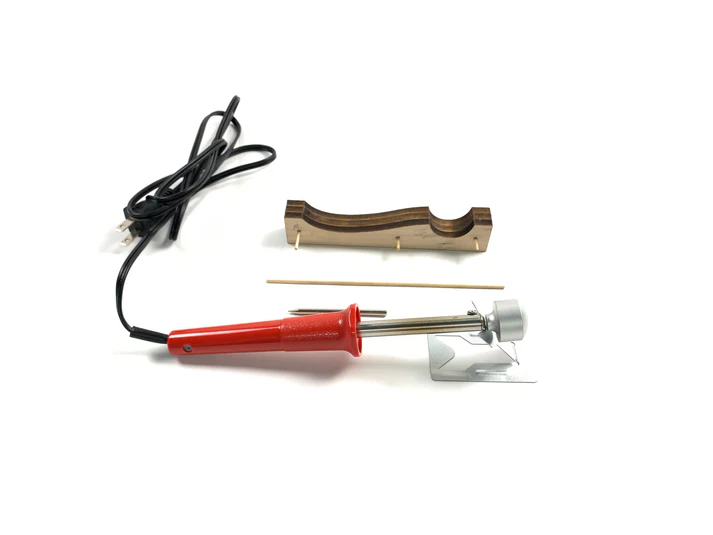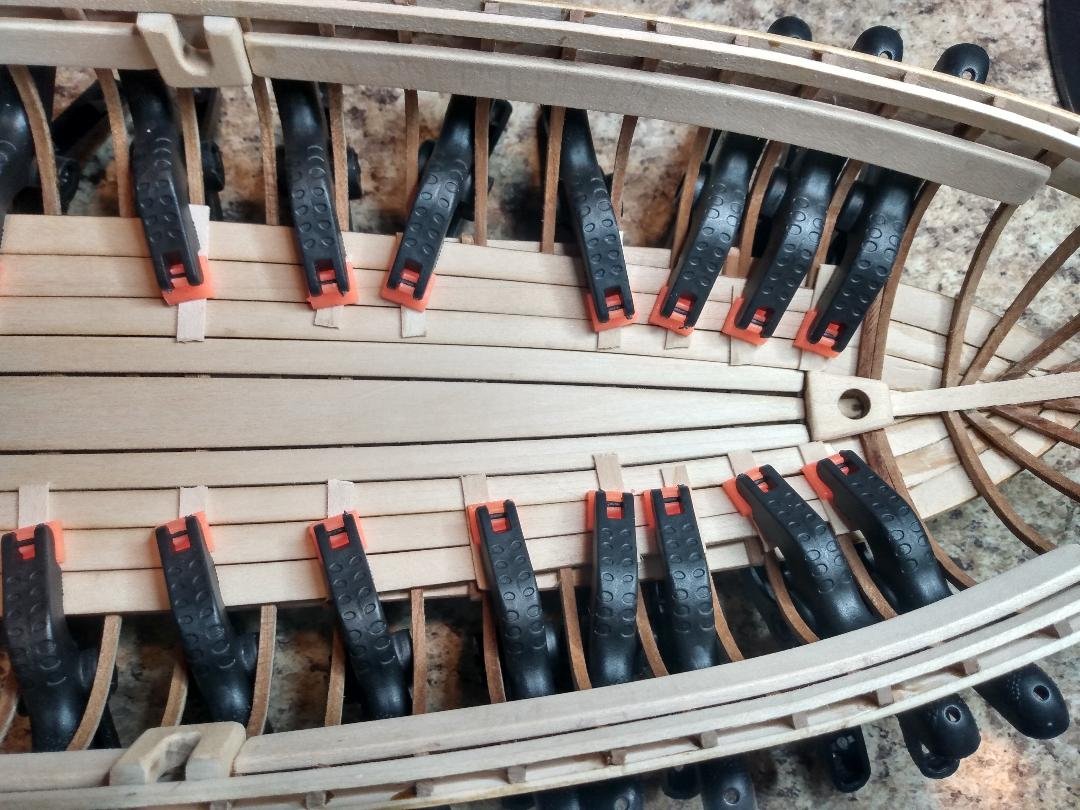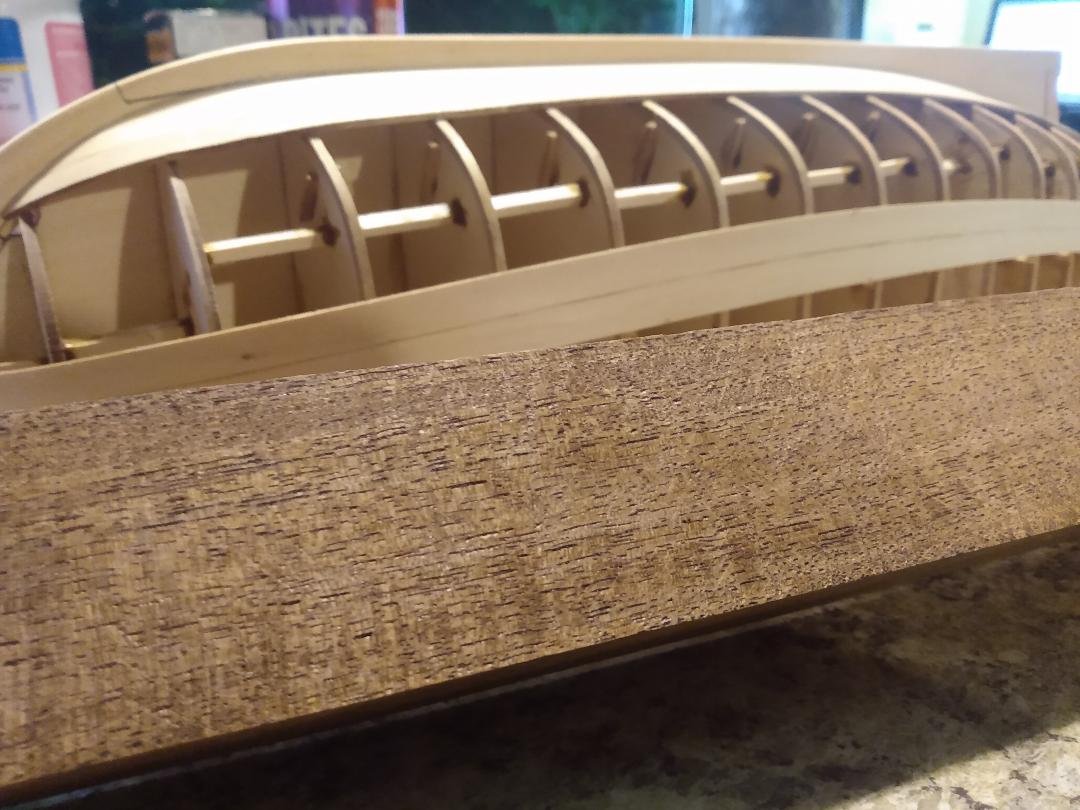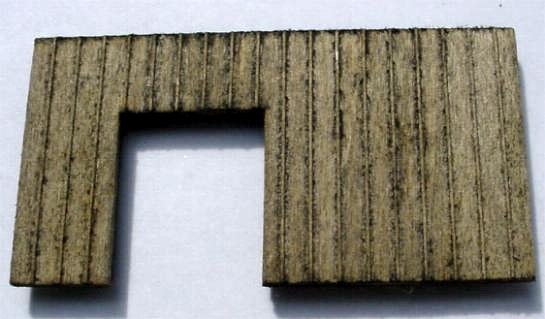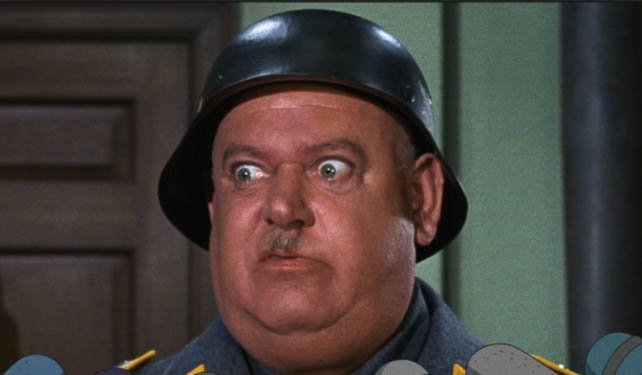-
Posts
725 -
Joined
-
Last visited
Content Type
Profiles
Forums
Gallery
Events
Everything posted by tmj
-
Very clever idea Glen! I'm late but will be keeping up with future progress for sure.
- 156 replies
-
- Queen Annes Revenge
- bottle
-
(and 1 more)
Tagged with:
-
After my planks are properly 'spiled' to shape, I like to wrap them with paper towels then gently moisten the paper towels with tap water. Don't flood it until it's dripping water, just get the paper towels plenty moist and wrap everything in cooking foil for about 24 hours. If you are using a soft wood, you can then simply clamp those planks to your bulkheads or frames and let them dry until the next day. Soft wood will easily take all of the twists and curves while drying. Harder woods will need a bit of help via heat. I use the same process only I use heat on the tighter bends prior to clamping the moist planks onto the frames/bulkheads. This works pretty well most of the time, however. You'll probably need to work the harder wood planks with a bit more heat while clamped in place, and maybe even after drying overnight to conquer the tighter bends and twists. Don't get into a hurry and don't try to bend too far/tight in one heat. Sneak up on those tight bends a little bit at a time. You'll eventually get there! 😉 Once dry your planks will be ready for glue. This is my hot bender of choice. It works extremely well for 'me'. Here's a launch I'm working on. The three center floorboards are glued in place. The outer most floorboards are currently being 'wet-formed' to shape around the glued center boards, until tomorrow when they will be dry and ready to be glued down. This is soft wood with no tight bends so no heat will be required.
-
I was once considering the 'Canal Boat Life', after retirement, in the UK where it's big, however. I own too many toys that I'm not interested in parting with. It wouldn't work. Most folks 'downsize' when they retire but I'm thinking that I'll need to 'Upsize'! I'd need a large canal boat plus a barge or two! I'd look like a floating Italian string of sausage links trying to get through the locks 'one link at a time'! 🫤 LOL
-
Keep the OOD on watch and closely guard those lines 'till construction resumes... less any land-dwelling critters find said lines amusing and quickly take it upon themselves to create adventure from any loose ends! 😲
- 254 replies
-
- Victory Models
- Pegasus
-
(and 3 more)
Tagged with:
-
"Sternwheeler - Houston, Copy." "Be advised... we're working on it............"
- 457 replies
-
- sternwheeler
- Hard Coal Navy
-
(and 1 more)
Tagged with:
-
Hold on. I need to find my jeweler's loop so I can see this better!
- 457 replies
-
- sternwheeler
- Hard Coal Navy
-
(and 1 more)
Tagged with:
-
About the weathering. I have to go back to one of your first images. It appears as though the pilot house is darker and dirtier than the deck house/engine room. Could this be from soot and winds/breezes up high blowing that smoke more onto the pilot house walls than onto the engine room walls? Other than this one tiny observation, I think your weathering looks 'GREAT' and close to 'PERFECT'! It could be the light also. You've already mentioned that the photos of your work look different than the real thing, due to lighting. Looking at the location of that 'smokestack'... that pilot must have been hating life if the wind blew in the wrong direction! 🫤
- 457 replies
-
- sternwheeler
- Hard Coal Navy
-
(and 1 more)
Tagged with:
-
This is a chunk of Black Mesquite. I love Mesquite in my BBQ pit and now I'm going to see how much I like it on my modeling bench. I have an upcoming build and want to use this for my keel, sternpost, stempost, deadwood and rising wood components. It's some hard stuff for sure. It's going to give my tools a good workout, offering lots of sharpening opportunities in my future! 😬
-
... all being said. Just how far would 'any' true attempt at litigation be allowed to proceed, while in discovery it became 'obvious' that no mal intent, nor any desires or methods to profit from said, used 'image(s)' ever existed? Sure, there is legal 'precedence everywhere you look, but that's not the "Be All" of the laws of our land! "I object!" Perry Mason
-
You could always just paint the roof flat black, like tarpaper, then put the roof on top of 'your' roof for the summer. That should weather it pretty good and natural like! 🙃 LOL On second thought, that wouldn't work. The bird poop would be out of scale! 😲
- 457 replies
-
- sternwheeler
- Hard Coal Navy
-
(and 1 more)
Tagged with:
-
Perhaps you can simply modify more popular, easy to obtain blades via a rotary tool, so they will fit? Dunno, just tossing that out there. You could also just re-sharpen the existing blade via stones and a strop, just like a straight razor... Option #3... buy some thin 01 tool steel off of Amazon and make a new, better blade, harden it with a propane torch and canola oil and hone a scary sharp edge on it. You'll have all the blades you'll ever need then! 😁
-
Use the black for undertones and build up layers of grunge on top, kinda like this. (Take note of the image file name)
- 457 replies
-
- sternwheeler
- Hard Coal Navy
-
(and 1 more)
Tagged with:
-
How did you weather/whitewash the PH? Maybe you can still do the same for the roof using not so bright colors... and a bit of dry brushing.
- 457 replies
-
- sternwheeler
- Hard Coal Navy
-
(and 1 more)
Tagged with:
-
I'm glad you found that question entertaining...
- 457 replies
-
- sternwheeler
- Hard Coal Navy
-
(and 1 more)
Tagged with:
-
Is there any reason that this could not be chain driven in the middle, 'between' the two wheels?
- 457 replies
-
- sternwheeler
- Hard Coal Navy
-
(and 1 more)
Tagged with:
-
- 457 replies
-
- sternwheeler
- Hard Coal Navy
-
(and 1 more)
Tagged with:
-
Make that three, or four, or whatever my current 'clueless' place in line is...
- 457 replies
-
- sternwheeler
- Hard Coal Navy
-
(and 1 more)
Tagged with:
About us
Modelshipworld - Advancing Ship Modeling through Research
SSL Secured
Your security is important for us so this Website is SSL-Secured
NRG Mailing Address
Nautical Research Guild
237 South Lincoln Street
Westmont IL, 60559-1917
Model Ship World ® and the MSW logo are Registered Trademarks, and belong to the Nautical Research Guild (United States Patent and Trademark Office: No. 6,929,264 & No. 6,929,274, registered Dec. 20, 2022)
Helpful Links
About the NRG
If you enjoy building ship models that are historically accurate as well as beautiful, then The Nautical Research Guild (NRG) is just right for you.
The Guild is a non-profit educational organization whose mission is to “Advance Ship Modeling Through Research”. We provide support to our members in their efforts to raise the quality of their model ships.
The Nautical Research Guild has published our world-renowned quarterly magazine, The Nautical Research Journal, since 1955. The pages of the Journal are full of articles by accomplished ship modelers who show you how they create those exquisite details on their models, and by maritime historians who show you the correct details to build. The Journal is available in both print and digital editions. Go to the NRG web site (www.thenrg.org) to download a complimentary digital copy of the Journal. The NRG also publishes plan sets, books and compilations of back issues of the Journal and the former Ships in Scale and Model Ship Builder magazines.






